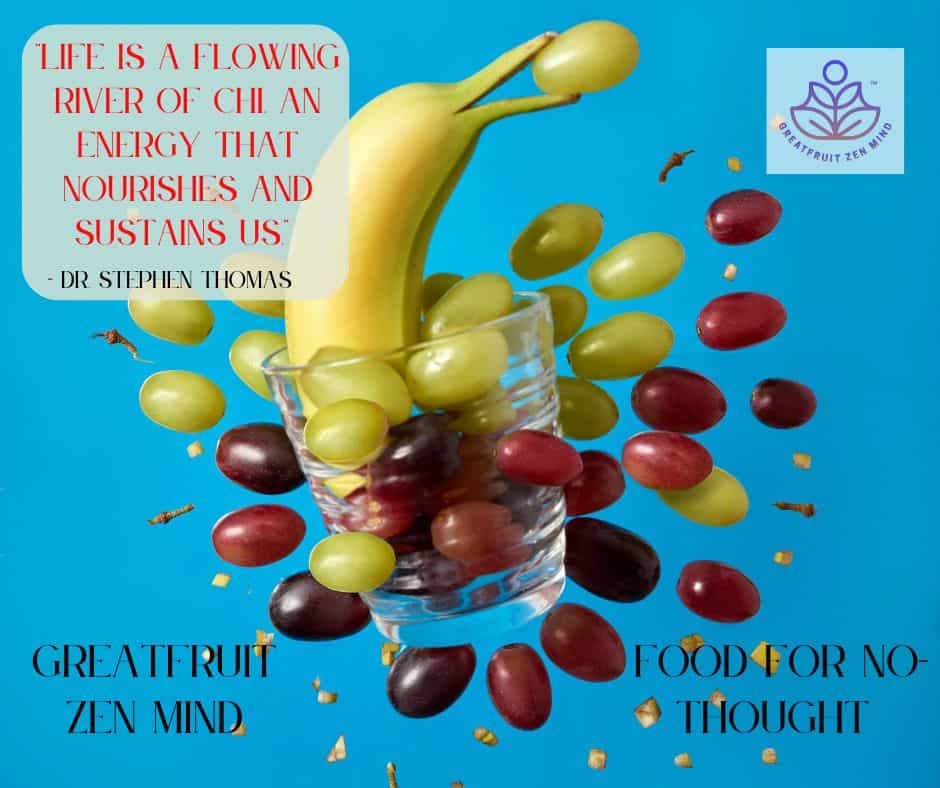Read time 4 minutes. This is a stand alone article in our Blocked Energy series.
The teachings speak often about the benefits of remaining open to whatever life throws our way. We hear it said: let go, don’t cling. But the deeper message is not to become some idealized open person. The invitation is to practice in ways that make us available for transformation.
When we refuse that invitation—when we resist, when we dam up what arises—we accumulate blocked energy. This weight builds inside us. Today we’ll look at how to recognize this energy, and how to change our relationship with it.
When the river is dammed
Think of what happens when you dam a river. The natural current stops. But more than that, something new appears: a man-made lake, a heavy reservoir that did not exist before.
Our inner disturbances behave the same way. What weighs us down is not the original flow but the pool we’ve built by damming it. The lake is a human invention. The burden, in large part, is self-created.
Be water
You don’t need to be a Zen master to see the wisdom of going with the flow. Tao is often compared to water for good reason.
Water does not compete to be high; it moves low, and in doing so it carves valleys. It adapts without giving up its strength. When a river meets a boulder, it bends, but in time it wears the boulder down. Water yields and persists at once.
There’s another lesson too. When water grows still, debris settles and clarity appears. Calm water is transparent. Yet if it stops flowing entirely, it stagnates. So our task is this paradox: to allow constant movement without constant disturbance. This is the essence of practice.
Thoughts, emotions, and energy
In The Untethered Soul, Michael Singer puts it plainly:
“It’s not just about letting go of thoughts and emotions. It’s actually about letting go of the pull that the energy itself has on consciousness.”
This distinction matters. Thoughts and emotions may seem like the problem, but what truly grips us is the energy beneath them. We can’t stop this energy from arising—it always will. One disturbance falls away, and another takes its place.
The problem isn’t the arising. The problem is the pull. When our attention is caught and held, we stagnate. Blocked energy forms, just as surely as a river becomes a lake behind a dam.
Who is feeling this energy?
So what do we do? We dismantle the dam. Not in a single strike, not in a grand gesture, but as a steady practice.
Each time energy pulls at us, we notice it quickly. We recognize it with the steadiness of a warrior. And we make a small but radical choice: to let it pass. To allow it without indulging, without feeding, without hiding.
Singer writes:
“All you have to do is notice who it is that feels the negative energy. The one who notices is already free.”
This is the core of self-inquiry. We learn not by grasping after who we are, but by recognizing who we are not. We’re not the pull. We’re not the disturbance. Consciousness is what sees, not what is seen.
Stay present: Accept and allow
Carl Jung is often paraphrased: what you resist, persists. The point is not to get rid of disturbance so that we can finally feel okay. The point is to accept that sometimes we will not feel okay—and that this, too, is allowed.
Paradoxically, this acceptance is what opens the door to transformation. Not by forcing change, but by releasing the need for control.
And here’s the deeper truth: you are reading this because the old way has not worked. It has taken a toll—mental, physical, emotional. The dam is heavy. The business unfinished.
If you let the energy flow, it transforms itself.
Singer again:
“If you let go, and permit the purification process to take place inside, that blocked energy will be released. When it’s released and allowed to flow up, it becomes purified and merges into your center of consciousness. This energy strengthens you instead of weakening you.”
Blocked energy does not have to remain blocked. When it is released, it returns to its source. What once weighed you down becomes the very current that carries you forward.
Explore more:
Chi is a traditional Chinese concept that is sometimes translated in English to mean “vital energy.” This article by Scott Jeffrey provides a beginners guide to Chi energy. It is a very approachable and thorough introduction to the concept. I will allow the article to entice you for itself:
“Chi is the source of all life.
When our Chi flows smoothly, life becomes effortless and free.
When our Chi is blocked, it leads to disharmony, tension, and discontent.
Is it worthwhile to make life changes to cultivate your Chi?
I’ll leave that for you to decide …”
–
Thanks for visiting Greatfruit Zen Mind.
We’re building something bigger than ourselves
and we want you to be a part of it.
🌀 From the GZM Archives – Polished, Preserved, Still Relevant.


Leave a Reply